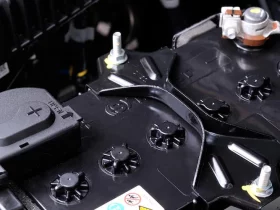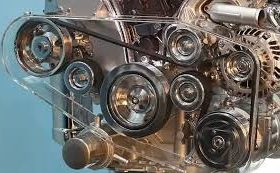After undergoing a knee replacement surgery, patients often wonder when they will be able to resume their normal activities, such as driving.
While the recovery process varies from person to person, it is important to follow the guidance of your healthcare provider to ensure a safe and successful recovery.
Understanding the healing process
To determine when you can safely get back behind the wheel after knee replacement surgery, it is important to understand the healing process.
Which lasts for about 2-6 weeks, you will need to use crutches or a walker to support your weight and protect your new knee. During this time, driving is not recommended as your leg strength and overall mobility may still be limited.
Typically around 6-12 weeks after surgery, your healthcare provider will evaluate your progress and may give you the green light to resume driving. However, it is important to discuss with your provider and ensure that you have regained sufficient strength.
Factors
Before you jump back into the driver’s seat after knee replacement surgery, there are several factors you need to consider. These factors will help you gauge when it’s safe for you to resume driving and ensure a smooth transition back to this daily activity.
First and foremost, consult with your healthcare provider. They will assess your progress and provide valuable insight on when you can safely start driving again. Your provider will consider various factors such as the type of knee replacement surgery you had, your overall health.
Another important factor to consider is your reaction time. Remember that driving involves quick reflexes and decision-making abilities. It’s important to assess whether you’re mentally sharp and have regained the confidence to react swiftly in unexpected situations.
Lastly, consider the legal requirements in your area. Check with local authorities or your Department of Motor Vehicles to clarify any regulations or guidelines related to driving after knee replacement surgery.
Guidelines and timelines
While every individual’s recovery process may vary, there are general guidelines and timelines that can help you determine when it’s safe to resume driving after knee replacement surgery. It’s important to note that these guidelines are not set in stone.
Typically, most individuals are advised to wait at least 4 to 6 weeks before driving again. During this time, you should focus on postoperative rehabilitation, including physical therapy exercises to improve strength, flexibility, and range of motion in your knee.
Before getting behind the wheel, it’s important to ensure that you can comfortably sit in the driver’s seat for an extended period without experiencing pain or discomfort. You should also be able to control the vehicle effectively, including the ability to brake, accelerate.
Driving requires concentration and quick decision-making abilities. It’s crucial to assess whether you have regained the mental sharpness and confidence to react swiftly in unexpected situations.
If you’ve had surgery on your right knee and drive an automatic vehicle, you may be able to resume driving sooner compared to those with surgery on their left knee or who drive manual transmission vehicles.
Tips for a safe and comfortable driving
Now that you have received the necessary guidelines and timelines for driving after knee replacement surgery, it’s time to focus on ensuring a safe and comfortable driving experience. Here are some tips to keep in mind:
1. Plan your route:
Before hitting the road, plan your driving route to avoid potential hurdles such as traffic congestion or bumpy roads. Choose routes that minimize joint stress and provide a smooth driving experience.
2. Use adaptive equipment:
Consider using adaptive equipment such as a cushion or seat wedge to provide extra support and comfort for your knee while driving. These aids can help reduce strain and enhance your driving experience.
3. Take breaks:
On long drives, make sure to take regular breaks to stretch your legs and reduce stiffness. This will help prevent fatigue and discomfort in your knee.
4. Adjust your seating position:
Ensure that your seating position is adjusted properly. Sit in an upright position with your back fully supported by the seat. Position the seat close enough to the pedals so that you can easily reach them without straining your knee.
5. Ease into it:
Start with short drives in low-traffic areas before gradually increasing the duration and complexity of your drives. This will help you regain your confidence and assess your comfort level while driving.
Safety should always be your top priority. If you experience any pain, discomfort, or difficulty while driving, it’s important to stop and rest. Listen to your body and consult with your healthcare provider if needed.
Consultation with your surgeon
Before you start driving after knee replacement surgery, it is crucial to consult with your surgeon and physical therapist. They will assess your progress, evaluate your range of motion, muscle strength, and overall recovery.
They may recommend a comprehensive evaluation of your driving abilities. This evaluation may include assessments of your mobility, reaction time, and coordination.
Compliance with legal requirements
Once you have received clearance from your surgeon and physical therapist to start driving after knee replacement surgery, it is important to ensure that you are compliant with all legal requirements and have the necessary insurance coverage.
Different countries and states may have varying regulations regarding driving after surgery or specific requirements for individuals with certain medical conditions. It is crucial to familiarize yourself with these regulations and ensure that you meet all the necessary criteria.
It is vital to review your insurance policy to ensure that your coverage is sufficient and that there are no restrictions or limitations related to your post-surgery driving.
Conclusion
Driving after knee replacement surgery requires careful consideration of legal requirements and insurance policies. Familiarizing yourself with the specific regulations in your country or state is crucial to ensure compliance.
Informed and making any necessary updates or modifications to your policy, you can have a worry-free driving experience.








Leave a Reply